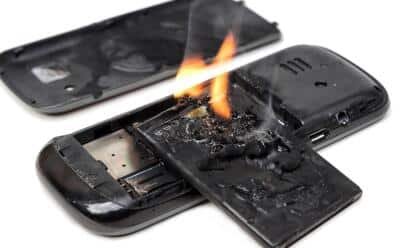How Your Lithium Batteries Come to You
Lithium batteries have the advantages of high energy density and high voltage. They are widely used in energy storage power supply systems such as hydraulic, thermal, wind and solar power plants, as well as power tools, electric bicycles, electric motorcycles, electric vehicles, military equipment, aerospace and other fields. Lithium batteries are of great significance to promote the green transformation of energy and achieve carbon peaking and carbon neutrality. China is a large producer and exporter of lithium batteries, and its exports have increased significantly in recent years. However, lithium batteries are dangerous goods, and accidents such as fire, smoke and explosion may occur during transportation, and their transportation safety must be paid attention to.How to make lithium batteries meet the requirements of international norms while achieving a more “safe” export. Follow us to learn how lithium batteries can reach you safely.
According to ”UN Recommendations on the Transport of Dangerous Goods“ , “International Maritime Dangerous Goods Code ” and “Technical Instructions For The Safe Transport of Dangerous Goods by Air” and other international regulations, lithium batteries are classified as Category 9 dangerous goods after passing the appraisal.
According to “UN Recommendations on the Transport of Dangerous Goods” , “International Maritime Dangerous Goods Code ” and “Technical Instructions For The Safe Transport of Dangerous Goods by Air” and other international regulations, lithium batteries are classified as Category 9 dangerous goods after passing the appraisal.
1. MSDS report, Material Safety Data Sheet report, which is a comprehensive regulatory document on the characteriestics of chemical provided by chemical production, trade, and sales companies to customers and the public in accordance with legal requirements. A MSDS is a document that contains informationon the potential hazards including health, fire, reactivity and environmental, and how to work safely with the chemical product.
2.Certification for Safe Transport of Chemical Goods. The appraisal of the conditions of carriage of goods is to make appraisals and recommendations on the transportation safety of goods based on domestic and foreign regulations and standards on the transportation of dangerous goods.
3.Syndrome of dangerous package. The hazard package certificate mainly includes two aspects, the performance certificate and the use certificate. The performance certificate is relatively simple, and it can generally be issued by regular manufacturers that provide packaging; the use certificate is more complicated. And the performance certificate must be used to apply to the local commodity inspection bureau of the factory that produces dangerous goods.
4.Export declaration information. A complete set of customs declaration information is: customs declaration form, packing list, invoice, power of attorney for customs declaration, sales contract, declaration elements.Among them, there are more dangerous goods exported from Nansha Port, Shekou Port, and Yantian Port that need to be confirmed. First, send the MSDS, UN38.3 test report, transportation appraisal certificate, and dangerous package certificate to the shipping company for confirmation, and the shipping company can confirm that it can be picked up before it can be arranged for pick-up, and it must have the qualification of export customs declaration.
Lithium batteries that want to go out by freighter or airplane must be tested in accordance with the test requirements of Chapter 38.3 of the United Nations “Manual of Tests and Standards for the Transport of Dangerous Goods” (hereinafter referred to as “UN38.3”).On this basis, it must also meet the requirements of transportation packaging inspection such as SN/T 0370 “Export Dangerous Goods Packaging Inspection Regulations” and hold a “certificate”.
Batteries and battery packs, batteries and battery packs installed in the equipment, batteries and battery packs packaged with the equipment, if they contain any form of lithium, must be classified as UN3090, UN3091, UN3480, and UN3481 to carry out hazard characteristic identification.The United Nations Committee of Experts on the Transport of Dangerous Goods has also assigned a new UN number 3536 specifically for lithium battery freight devices.
As a power supply, lithium batteries are widely used in new energy vehicles, mobile phones, notebook computers, power tools, pacemakers, backup power supplies, small household appliances, etc.If you want to go abroad, you need to go all the way through. So what levels does it need to pass?
Level 1: Environmental Test
The environment of lithium batteries when flying is much harsher than that of ordinary passengers. The low pressure and sudden temperature changes at an altitude of 10,000 meters have brought serious challenges to the hot-tempered lithium battery.Therefore, lithium batteries need to undergo two tests: high simulation and high and low temperature cycle.
In the high-simulation test, the lithium battery needs to be stored in a pressure environment below 11.6kPa and a temperature environment of 20±5℃ for at least 6 hours; in the high and low temperature cycle test, the lithium battery must withstand the rapid transition from -40℃ to 72℃ in the temperature test chamber. The test of “two days of ice and fire”.
Level 2: Mechanical Test
In addition to low pressure and sudden temperature changes, bumps and collisions are inevitable during the journey of lithium batteries.The three projects of the Mechanical test Center are designed to simulate the tests brought about by these situations.
In the vibration test, the lithium battery is tightly fixed on the vibration platform with huge thrust, and a cumulative 9-hour sweep vibration test is carried out to simulate the bumps during transportation.
In the impact test, the lithium battery followed the impact platform and performed a total of 18 mechanical shocks in six directions to simulate the contact with the ground or other scenarios that would produce instantaneous shocks when the aircraft landed.
In addition, there is an additional question dedicated to testing the battery.Use heavy objects to hit or steel plates to squeeze lithium battery cells to ensure that they will not catch fire and explode under extreme conditions.
Level 3: Electrical test
Lithium batteries that have passed the two levels must also show their skills and accept the test of electrical safety.Short-circuited batteries, overcharging, and forced discharges caused by uneven battery packs are all killers that can easily ignite the hot temper of lithium batteries.Only by verifying these situations one by one in the laboratory environment can it be proved that it has sufficient self-control ability and will not cause fire and explosion due to electrical abuse from the outside world.
Level 4: Identification of the use of dangerous packages
Lithium batteries are products that are required by the state to apply for dangerous goods packaging for export.Lithium batteries have already passed three levels in a row. After passing the three major safety performance tests of UN 38.3, they still need to be identified for the use of hazardous packages, and only after obtaining the “hazardous package certificate” can they be considered complete.“Dangerous package certificate” is an abbreviation, and its full name is “Certificate of Appraisal Results for the Use of Packaging for the Transport of Dangerous Goods Out of the Country”.When the customs implements the identification of the use of hazardous packages, it will make qualified judgments based on whether the identification of the packaging container meets the relevant requirements, whether the appearance of the packaging is clean, whether the packaging is firm, and whether the lithium battery can be covered and protected to avoid a short circuit or the packaging comes into contact with any conductive substance to cause a short circuit.After the customs has passed the inspection of the exported lithium batteries and their packaging, it will issue the “Appraisal Result Form for the Use of Packaging for the Transport of Dangerous Goods Out of the country”, which is the “dangerous Package Certificate”.
After passing these four levels, it is the “humble gentleman” who is healthy, gentle and stable, so as not to get angry if he doesn’t agree with a word.In this way, domestic lithium batteries can be exported smoothly. Your lithium batteries will come to your hands safely.
Prev Article: Lithium Batteries in Fish Finder
Next Article: Fire Suppression Method in Lithium Battery Storage System



Leave A Comment